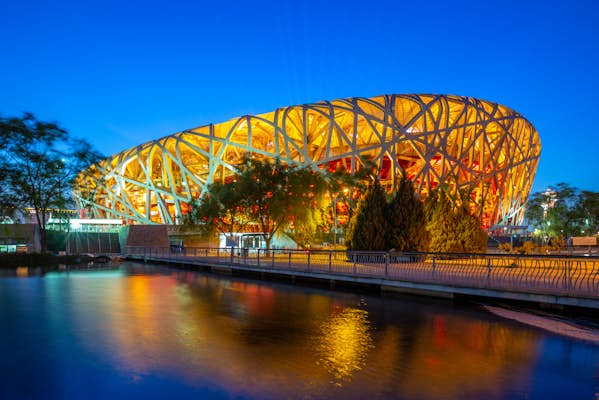The 2020 Tokyo Olympics has its finger on the starting pistol. Its 43 venues are in the sprint start position, waiting for the shot to be fired. Eight new venues have been built for this Summer’s Games, but what happens to the stadiums and swimming pools after the event?
We’ve compiled a list of what some of the former Summer and Winter Olympic venues look like today. Warning: includes some abandoned Olympic venues.
Repurposed Olympic venues
As part of the legacy projects on many Olympic games, the majority of venues are either kept for the benefit of the local community or repurposed for other uses such as hosting football clubs.

Sochi Winter Olympics 2014
The Fisht Olympic Stadium in Sochi was used for the 2014 Winter Olympic Games and is still standing today. It underwent a lot of renovations in preparation for the 2018 Fifa World Cup in Russia. Since then it has been mainly used as a home stadium for soccer team PFC Sochi.

London Summer Olympics 2012
Following the London Olympics, the Olympic stadium was converted into a multi-use facility and English Premiership team, West Ham United Football Club, call it home.

Vancouver Winter Olympics 2010
The Richmond Olympic Oval in Vancouver was built for the 2010 Winter Olympic Games and was used as a speed skating rink. Following that, it was reconfigured to as a community multi-sport park that is still in use today.

Lillehammer Winter Olympics 1994
The Lysgardsbakkene Ski Jumping Arena that was used in the Lillehammer Winter Olympics Games back in 1994 is still in use, having recently hosted the 2016 Winter Youth Olympics.
Rio de Janeiro Olympics 2016
The bid to host the 2016 Olympics was expensive, with many venues and buildings for housing athletes and media being purposefully built. Some have found a new lease of life however. The Barra Olympic Park has been used for various events and concerts since the games officially wrapped in 2016, including the 2018 Multishow Awards.
Beijing Summer Olympics 2008
The stunning Beijing National Stadium or “Bird’s Nest” was used for the 2008 Beijing Summer Games in a project that saw international architects working with Chinese artist Ai Weiwei. The stadium is still standing, and is hired for conventions and football matches. The city has been chosen to host the 2022 Winter Games which will see it reusing some existing structures.
Abandoned Olympic venues
Sadly, despite all of the cost and the time involved, many Olympic venues don’t find new purpose after the closing ceremony. Here are some of the more prominent Olympic venues which have gone to seed.
Rio de Janeiro Olympics 2016
After the Rio Olympics in 2016, not every venue found new purpose. In fact, a huge amount have fallen to disrepair, including the Olympic Aquatics Stadium.

Athens Summer Olympics 2004
Venues from the Athens Summer Games have unfortunately suffered by falling into disrepair and ruin. The former Olympic village shows the ghostly remains of abandoned areas that were once filled with cheering crowds. The Beach Volleyball Stadium at the Faliro Olympic Complex is currently unused.

Sarajevo Winter Olympics 1984
Like Athens, many venues of the Sarajevo Winter Games venues have fallen into disrepair. Built for use as an Olympic venue during for the games in 1984 , places such as the Olympic Ski Jumping Venue at Mount Igman near Sarajevo and the Trebevic Bobsleigh and Luge Track were heavily damaged during the Bosnian war in the early 90s, and were never rebuilt.
You might also like:
Feel like an Olympian by visiting these 7 Games venues
Pack your gym shorts: 9 unique sports to try on your travels
How to find great running routes wherever you are
This article was originally published on August 11, 2016 and was last updated on July 22, 2021.
